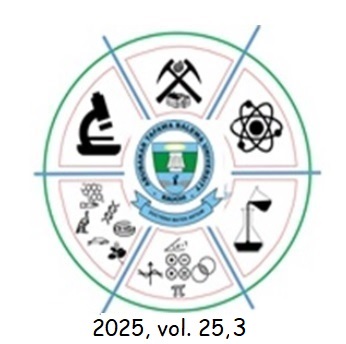Sedimentology of a Basin-Margin Lacustrine Fan-Delta Depositional System in the Campano Maastritchian Bida Formation, Bida Basin, Nigeria
Keywords:
Bida Basin, Lapai, Alluvial Fan, Fan-Delta, Debris Flow, Hyperconcentrated FlowAbstract
Basin margin sedimentary deposits are increasingly recognized as holding significant potential
for both hydrocarbon source and reservoir rocks, depending largely on the prevailing
paleogeographic and depositional conditions. Despite their importance, the depositional
environments of sedimentary successions along the eastern margin of the Bida Basin,
particularly around Lapai, have not been systematically documented. This study addresses
that gap by examining part of the eastern margin basin fill through detailed field
investigations and facies analysis of relatively well-exposed outcrops. The analysis led to the
recognition of seven lithofacies, which were further grouped into three genetically related
facies associations: (i) offshore lacustrine, (ii) subaqueous fan-delta, and (iii) subaerial fan
systems. The offshore lacustrine association is dominated by mudstone facies (Fm), massive
sandstone (Sm), and normally graded gravelly sandstone (Sn). These facies are interpreted
as the products of suspension settling, hyperconcentrated density flows, and turbidity
currents, respectively. The subaqueous fan-delta association is characterized by the
intercalation of debris-flow deposits (Facies Gmu, Sm, and Sn) with fine-grained mudstone
and siltstone intervals (Fm), reflecting the interplay between mass-flow processes and
background lacustrine sedimentation. In contrast, the subaerial fan association is
represented predominantly by ungraded, matrix-supported conglomerates (Gmu) and pebbly
to massive sandstones (Sm), with occasional trough cross-bedded conglomerates (Gt) and
minor mudstone intercalations (Fm). The observed vertical stacking pattern of these
associations indicates a progressive progradation of alluvial fan systems into the lacustrine
environment, reflecting a dynamic interplay between tectonic activity, sediment supply, and
lake-level fluctuations along the basin margin. From a petroleum system perspective, the
subaqueous fan-delta association is interpreted as the most prospective target for
conventional hydrocarbon reservoirs, owing to its textural heterogeneity and potential for
sand-rich channelized deposits. Meanwhile, the offshore lacustrine facies association holds
significant potential for unconventional hydrocarbon resources, especially as organic-rich
fine-grained intervals could act as both source rocks and tight reservoirs. Overall, this work
underscores the importance of integrating detailed outcrop-based facies analysis with
paleoenvironmental reconstructions to generate robust conceptual paleogeographic models.
Such models are invaluable in assessing the petroleum potential of basin-margin successions,
particularly in underexplored frontier basins like the Bida Basin.
Downloads
Downloads
Published
Issue
Section
License
Copyright (c) 2025 Journal of Pure and Applied Sciences (Science Forum)

This work is licensed under a Creative Commons Attribution-NonCommercial-ShareAlike 4.0 International License.




